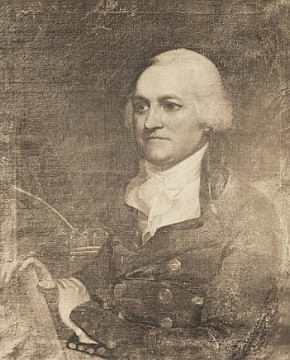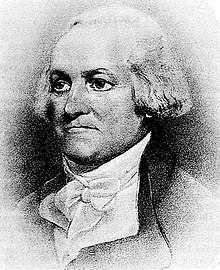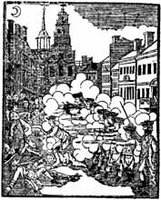“The said Inventory (A Very few Articles excepted)”
Having stayed in Massachusetts throughout the war, Williams had also established his loyalty to the republic, which might have been in doubt back in 1774 and 1775.
Williams then decided to revive his effort to be compensated for the loss of his animals and the destruction of his farm and house back in May and June 1775.
Williams assembled a long list of the property he had lost twelve years before, including furniture, clothing, and food. A sampling of the items:
- “24 very Eloquent Gilt Pictures, 1 small Carpet”
- “1 Coat of Arms work'd on Satting with Silver & Gold thread”
- “40 lb. of flax 2 Barrls Hops & 3 Quntal salt fish”
- “3 Large Jarr’s Sweet meats never opened”
- “1 Mahogy. Clock cost in England 25 £ Sterl. New”
- “1 Silver Nipple & Bottle”
- “60 bullets 30 lb. Lead. 6 Powdr horns. 2 Powdr flasks”
- “1 Barrl. best hard Bread a large Quanty of Loaf Sugar”
- “1 Large Bible & Several Other Books”
- “3 Hogsheads New Rum Just got home from the W. Indies Quanty. 234 Gallons a 3/4–”
- “6 Chissells 3 dung forks. Squares &c.”
- “1 large Boat £32– 1 Moses do £14. 1 yall £10–”
- “A New Black-Smiths Shop”
- “333 Young Locust tree’s Cut down which were Set out by Mr. Williams & were to have been paid for by the Owners of the Island at 3/ Each”
43 Elegant Horses...@ 30£ Each put into the Publick Stables … £1290:11:—The bottom line was £3645:6:2. That might or might not have been in debased local currency, but pound for pound that total was more than a third of what the East India Company had calculated as its loss in Boston harbor back in 1773.
3 Cattle taken & used as Provisions for the Army … 30:11:—
220 Sheep used as Provisions as above @12/- … 132:11:—
4 fine Swine … 12:11:—
5 Dozn Fowls Turkys & Ducks … 6:11:—
On 10 Mar 1787, Williams and his wife Elizabeth went before magistrate William Tudor (shown above) and swore
That the said Inventory (A Very few Articles excepted) was taken in the month of July following [the raids] & that according to my best Judgment and Recollection the Same is just and trueThe whole document can be studied on the Massachusetts Historical Society’s website.
In addition, Williams had collected some evidence supporting his claim, or perhaps answering critics who had said back in 1775 and 1776 that he didn’t deserve financial support.
TOMORROW: Supporting documents.











